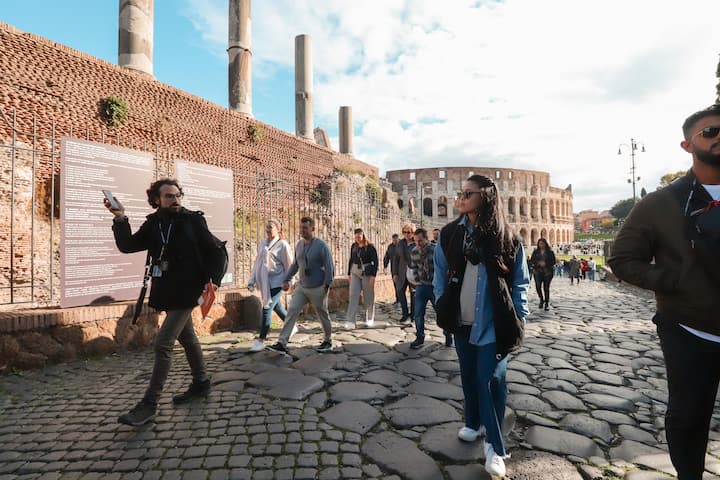Ancient ruins
Parco di Colle Oppio
Recomendado por 288 habitantes locales,
Consejos de residentes locales
"Colle Oppio" is one of the three hills which, with Fagutal and Cispius, constituted Mons Esquilinus. It belongs to the Monti district, of which it constitutes the green lung, and is between via Labicana, via degli Annibaldi, via Cavour, via Giovanni Lanza, via Merulana. The surrounding streets were intensively built between the late nineteenth and early twentieth centuries, while the archaeological emergencies (what remained, at least, from the looting) were included in the vast Colle Oppio Park, which slopes down towards the Colosseum valley. In 1871, as part of the urban reorganization following the establishment of Rome as the capital, the area was used as public gardens. But it was under the fascist dictatorship, in the years ranging from 1928 to 1936, that Colle Oppio assumed its current structure. The landscape architect Raffaele De Vico was the designer who took care of it. The extension of the gardens is 11 hectares; entrances: viale del Monte Oppio, via delle Terme di Traiano, via Mecenate, via Labicana, via Nicola Salvi, via delle Terme di Tito
"Colle Oppio" is one of the three hills which, with Fagutal and Cispius, constituted Mons Esquilinus. It belongs to the Monti district, of which it constitutes the green lung, and is between via Labicana, via degli Annibaldi, via Cavour, via Giovanni Lanza, via Merulana. The surrounding streets wer…
There are a historic Domus Aurea was an urban villa built by the Roman emperor Nero after the great fire that devastated Rome in A.D. 64 From there you can admire the Colosseum
From the Colle Oppio park you can enjoy the best view of the Colosseum, not disturbed by the city traffic. Harmonious gardens. Children’s playground and a small outdoor café/kiosk.
The hill was the seat of one of the villages from which Rome was built, and the memory of this sort of civil nobility was still alive in the Republican era, according to an inscription found at the Sette Sale, at the Baths of Trajan, which mentions the restoration of the sacellum compitale done at the expense of the inhabitants (de pecunia montanorum)]. In the Augustan subdivision of the city, Mons Oppius was included in Regio III, called Isis et Serapis from the great temple that stood on its south-eastern slopes, between today's Via Labicana and Via Merulana. Already home (in the direction of the Vicus Suburanus) of the Portico of Livia, the height was occupied in the Neronian era by the Domus aurea and by the subsequent Terme di Tito and Traiano. In the Christian era, the Titulus Eudoxiae (today's San Pietro in Vincoli) and the Titulus Equitii (now San Martino ai Monti) settled there. Today it belongs to the Monti district, of which it is the green lung, and is between Via Labicana, via degli Annibaldi, via Cavour, via Giovanni Lanza, via Merulana. The surrounding streets were intensely built between the end of the 19th century and the beginning of the 20th century, while the archaeological emergencies (as far as they remained, at least from the plundering) were included in the vast Parco del Colle Oppio, which descends towards the Colosseum valley.
The hill was the seat of one of the villages from which Rome was built, and the memory of this sort of civil nobility was still alive in the Republican era, according to an inscription found at the Sette Sale, at the Baths of Trajan, which mentions the restoration of the sacellum compitale done at t…
Actividades únicas en la zona
Los residentes locales también recomiendan
Ubicación
Viale del Monte Oppio
Roma, Lazio







